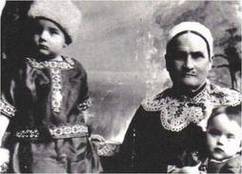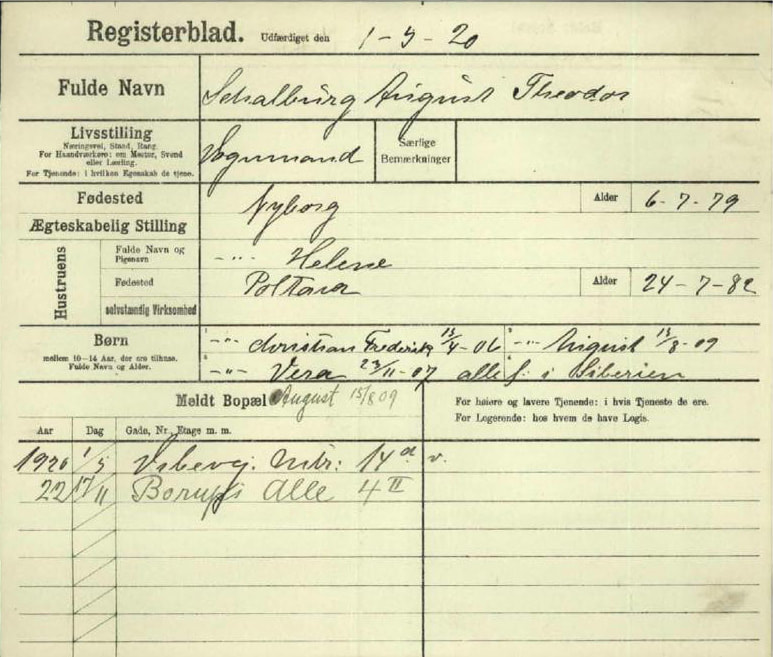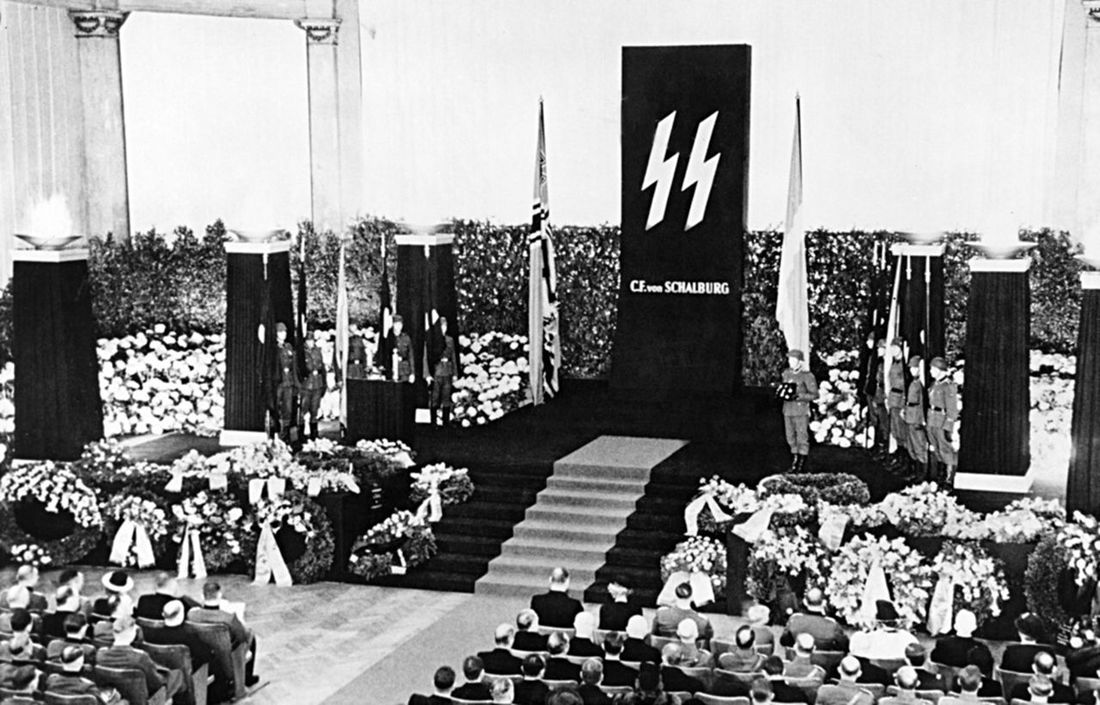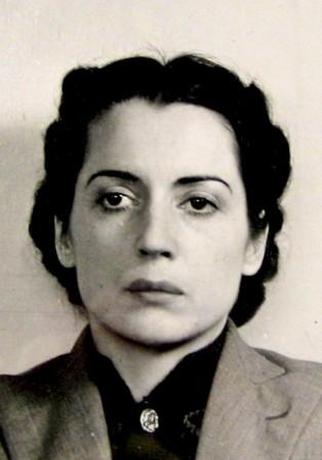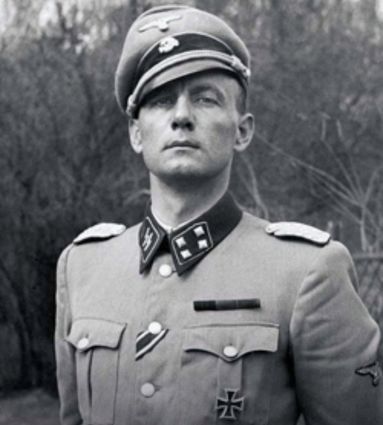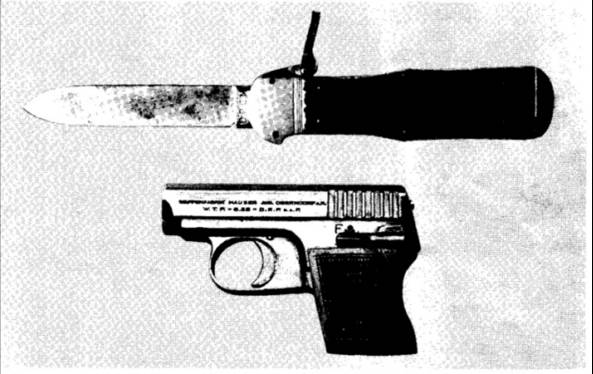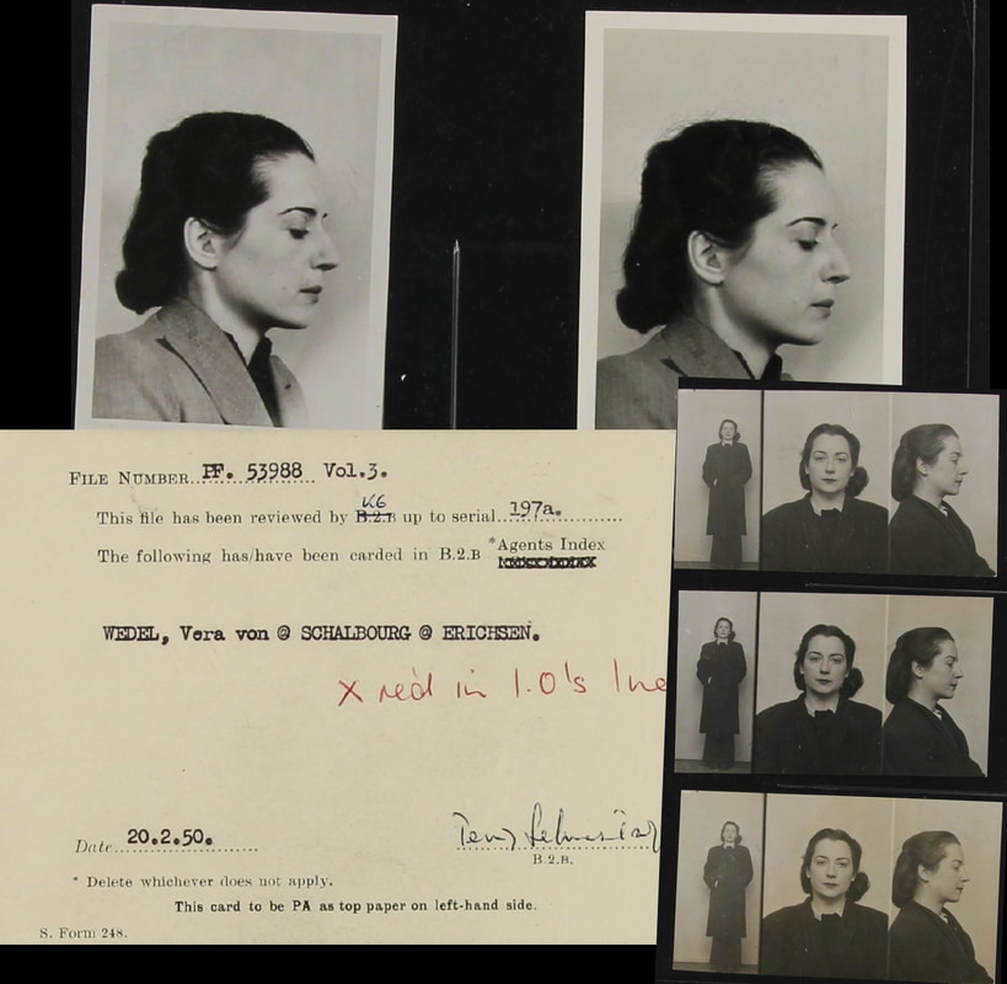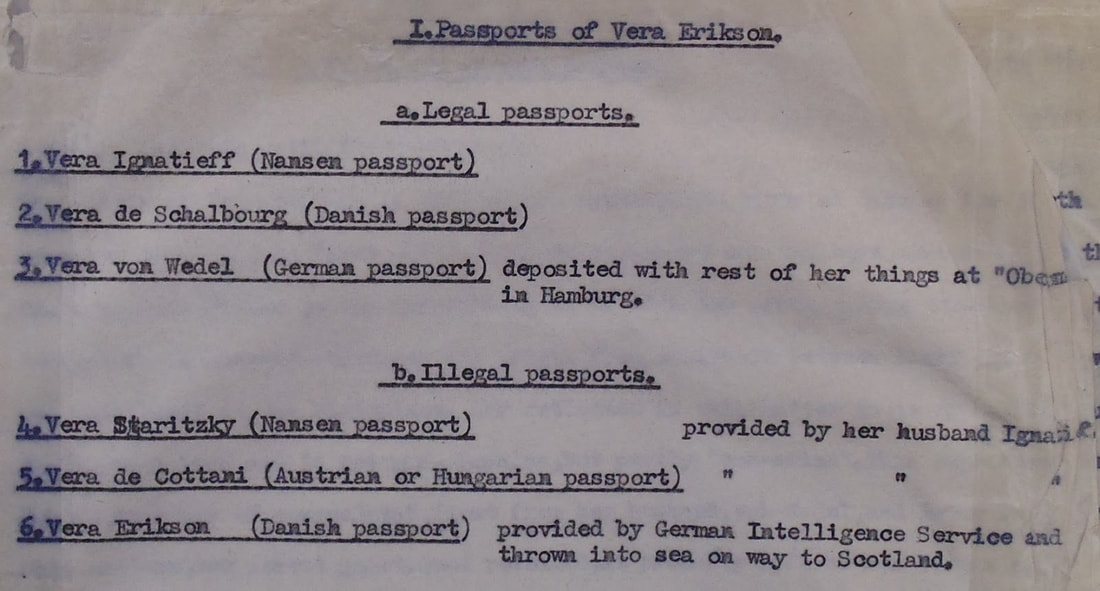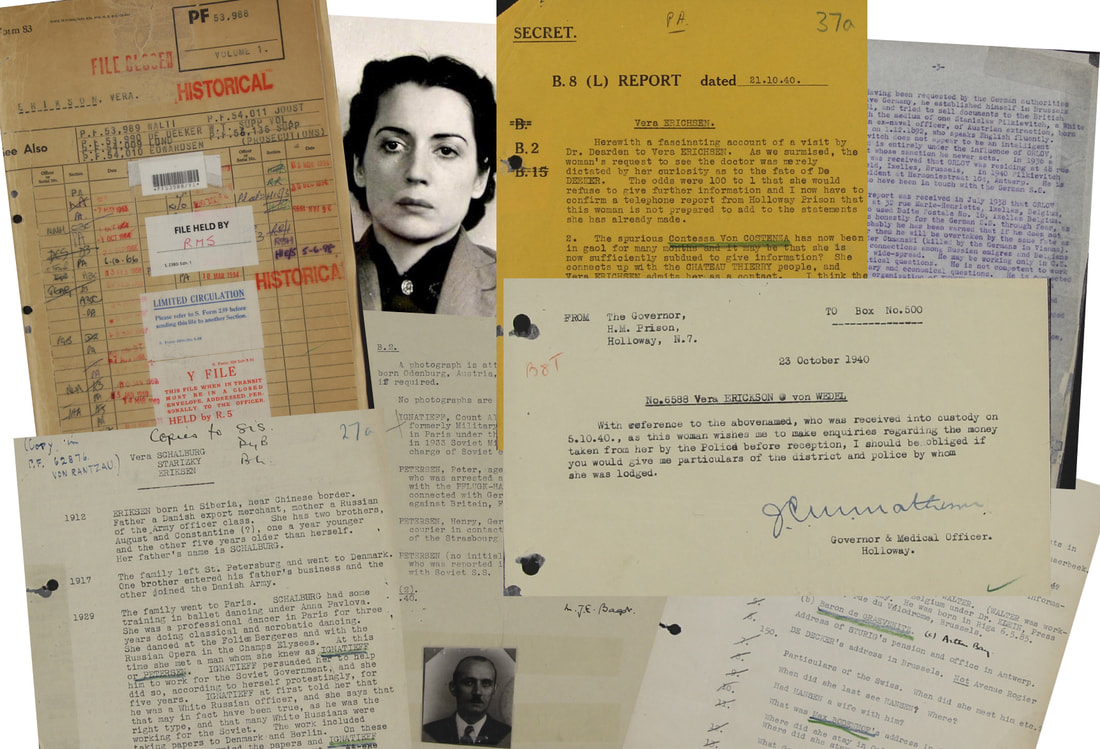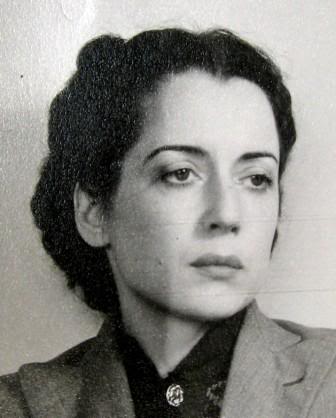
Vera Erikson, who was supposed to be a Danish exile living at 18 Sussex Place, London, W11, and Karl Drucke playing the part of a French refugee from Belgium, named Francois de Deeker, living at 15 Sussex Gardens, headed towards Port Gordon. The third agent, Robert Petter (using the name Werner Heinrich Walti) went to Buckie. Vera was apparently to assume the role of the long-lost niece of an elderly Italian Countess living in Kensington. The Germans thought this would be excellent cover for her to meet prominent people because the Countess had a reputation for lavish entertaining. This would explain the Mediterranean name, Vera de Cottani de Chalbur, she gave later gave.
Drucke and Erikson arrived at Port Gordon railway station at about 7.30am intending to catch the train. The porter John Geddes and the stationmaster John Donald observed the two strangers, arriving at the station. It was Vera who spoke first to ask the name of the station, which aroused the suspicion of the staff. Drucke then pointed to Forres on the timetable and asked for tickets to "Forrest". As Drucke opened his wallet, crammed full of banknotes and laid far too much money on the counter, the stationmaster noticed that the bottom of the stranger's trousers were soaking wet as were Erikson's stockings and shoes. The stationmaster told John Geddes to keep the pair talking while he telephoned the local policeman Constable Grieve.
Within ten minutes the village policeman Robert Grieve had made his way up from Stewart Street to the Railway Station. He immediately asked to see the stranger's identity cards and noticed that although both claimed to be refugees, neither had an immigration stamp on their cards and indeed the style of writing on both was Continental in style.
His suspicions confirmed Constable Grieve asked both of them to accompany him to the Police Station in Stewart Street. Once there Grieve telephoned Inspector John Simpson in Buckie. When Simpson arrived he asked the man who he was, but before he could reply Vera Erikson said, "He cannot speak English". Inspector Simpson then carried out a search of them discovering a box containing nineteen rounds of revolver ammunition. The Inspector checked their identity cards and observed that the numbers were written in the European style. Vera told the inspector that she was twenty-seven years old, a widow and a Danish subject, adding that they had spent the night in a hotel in Banff and taken a taxi to within a mile of Port Gordon before walking to the station. With their credibility disappearing with every utterance they were formally arrested and charged. Inspector Simpson then had them taken to the more secure facilities at Buckie Police Station.
In Buckie, Inspector Simpson carried out a more thorough search discovering the luggage to contain a Mauser pistol and flick-knife (pictured right), wireless equipment, a list of RAF bases, batteries and a torch clearly marked 'Made in Bohemia'. In addition Vera's purse contained £72 in Bank of England notes and Drucke's wallet contained £327 also in Bank of England notes. At 11.45am the Buckie coastguard spotted an object floating in the sea about a quarter of a mile out. Coastguard Addison and the harbourmaster went out and recovered the object, a pair of bellows and, slightly further away, a rolled-up rubber dinghy.
Drucke and Erikson arrived at Port Gordon railway station at about 7.30am intending to catch the train. The porter John Geddes and the stationmaster John Donald observed the two strangers, arriving at the station. It was Vera who spoke first to ask the name of the station, which aroused the suspicion of the staff. Drucke then pointed to Forres on the timetable and asked for tickets to "Forrest". As Drucke opened his wallet, crammed full of banknotes and laid far too much money on the counter, the stationmaster noticed that the bottom of the stranger's trousers were soaking wet as were Erikson's stockings and shoes. The stationmaster told John Geddes to keep the pair talking while he telephoned the local policeman Constable Grieve.
Within ten minutes the village policeman Robert Grieve had made his way up from Stewart Street to the Railway Station. He immediately asked to see the stranger's identity cards and noticed that although both claimed to be refugees, neither had an immigration stamp on their cards and indeed the style of writing on both was Continental in style.
His suspicions confirmed Constable Grieve asked both of them to accompany him to the Police Station in Stewart Street. Once there Grieve telephoned Inspector John Simpson in Buckie. When Simpson arrived he asked the man who he was, but before he could reply Vera Erikson said, "He cannot speak English". Inspector Simpson then carried out a search of them discovering a box containing nineteen rounds of revolver ammunition. The Inspector checked their identity cards and observed that the numbers were written in the European style. Vera told the inspector that she was twenty-seven years old, a widow and a Danish subject, adding that they had spent the night in a hotel in Banff and taken a taxi to within a mile of Port Gordon before walking to the station. With their credibility disappearing with every utterance they were formally arrested and charged. Inspector Simpson then had them taken to the more secure facilities at Buckie Police Station.
In Buckie, Inspector Simpson carried out a more thorough search discovering the luggage to contain a Mauser pistol and flick-knife (pictured right), wireless equipment, a list of RAF bases, batteries and a torch clearly marked 'Made in Bohemia'. In addition Vera's purse contained £72 in Bank of England notes and Drucke's wallet contained £327 also in Bank of England notes. At 11.45am the Buckie coastguard spotted an object floating in the sea about a quarter of a mile out. Coastguard Addison and the harbourmaster went out and recovered the object, a pair of bellows and, slightly further away, a rolled-up rubber dinghy.
By the end of the day, the agents were under armed guard on a train to London. The agents were interrogated by Lieutenant-Colonel Hinchley-Cooke at Scotland Yard and eventually signed statements in March 1941. On June 12th-13th 1941, Drucke and Walti came up for trial at the Old Bailey. Mr Justice Asquith presided, while the Solicitor General, Sir William Jowitt KC, led the prosecution. The various officers from Scotland were called to give evidence with Bob Grieve the first witness. However, the court was simply told that Vera Erikson would not be present in court. The jury retired for only a few minutes before returning a verdict of guilty. The Court of Criminal Appeal dismissed an appeal made in secret on July 21st 1941. Both men were executed at Wandsworth Prison on August 6th 1941.
Vera was interned throughout the War in a series of locations. The files on her in the National Archives run to over one thousand pages but have clearly been redacted. She almost certainly gave the Allies useful information and thus avoided prosecution. At the end of the war she was deported to Germany and apparently disappeared. There is a death certificate in Hamburg from 1947 which lists a Vera Staritzky (a version of her mother's name) but this is not conclusive. Alternative theories suggest that she was given a new identity and lived out the rest of her life in the United Kingdom dying possibly in 1978 or 1993. She remains the great enigma.
